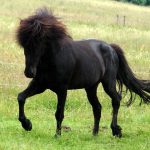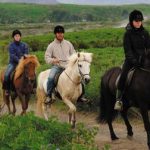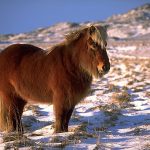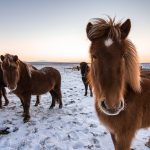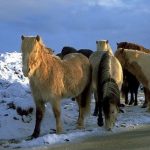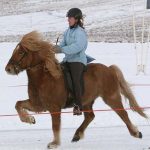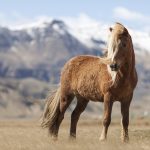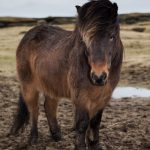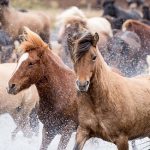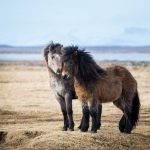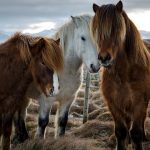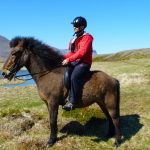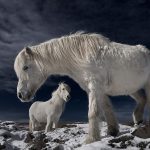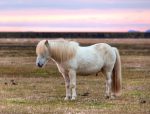Icelandic Horse
Icelandic horse, believed to be a descendant of ancient German and Norwegian horses, is a breed of small and sturdy equines developed in Iceland during the 9th-10th centuries. Known for its sure-footed movements, the Icelandic can cross rough terrain with incredible ease.
Icelandic Horse Pictures
- Black Icelandic Horse
- Iceland Horse Tours
- Iceland Horse
- Iceland Horses
- Icelandic Horse Images
- Icelandic Horse Tolt
- Icelandic Horse
- Icelandic Horses Photos
- Icelandic Horses Pictures
- Icelandic Horses
- Pictures of Icelandic Horses
- Riding Icelandic Horses
- The Icelandic Horse
- White Icelandic Horse
Quick Information
| Other Names | Islenzki hesturinn, Icelandic pony, Iceland Tolter, Icelandic toelter horse |
| Temperament /
Personality |
Patient, uncomplicated, spirited, adaptable, friendly, easy going |
| Physical Characteristics | Well-proportioned head, straight profile, wide forehead; short, muscular neck with a broad base, broad and low withers, deep chest, slightly sloping and muscular shoulders, long back, short, muscular, and broad croup, strong legs, short pasterns, long cannon bones, full tail and mane |
| Colors | Gray, chestnut, black, palomino, pinto, roan, dun, bay |
| Height (size) | 13-14 hands (52-56 inches, 132-142 cm) |
| Weight | 730-840 lb (330-380 kg) |
| Blood Type | Cold-blooded |
| Common Uses | Traditional sheepherding, showing, leisure riding, and racing |
| Health | No known diseases specific to the breed; the Icelandic government has taken strict measures for their protection |
| Gaited | Yes; walk, trot, canter/gallop; a four-beat ambling gait called tölt, and a smooth pace called flugskeið, skeið, or “flying pace” |
| Popular Traits | Unique gaits, sturdily built, amiable disposition, ability to carry weight on rough terrain, easy to maintain |
| Feeding/Diet | A mix of alfalfa, soya meal, linseed, flaked maize, vitamin supplement |
| Country of Origin | Iceland |
| Ancestors | Faroe and Yakut ponies; Fjord, Mongolian, and Nordlandshest horses |
| Breed Registry/Association | The Icelandic Horse Society of Great Britain, United States Icelandic Horse Conference |
Video:Icelandic Horse Gaits
History and Development
Icelandic horses trace their origin back to the Viking Age when Norsemen brought some ancient horses to Iceland. Later, immigrants from Scotland and Ireland crossed ancestors of Connemara, Highland, and Shetland ponies with the horses previously imported. The horses were treated with great respect, and they played a role in Norse mythology. They represented fertility while the white horses were sacrificed during feasts and ceremonies.
During the 10th century, efforts were made to cross Oriental horses with Icelandic, causing the breeding stock to deteriorate. However, crossbreeding of Icelandic horses came to an end in 982 AD after the parliament passed a prohibitory act against the importation of horses. Since then Icelandic horses have been purebred. When climatic conditions became more favorable, people started breeding them selectively according to color and conformation.
During 1300-1900, selective breeding became less popular, as 70% of the horse population was wiped out after the eruption of the volcanic fissure Lakagigar. Their population gradually improved during the 1900s, and in the next century, selective breeding was reestablished. The first breed societies were formed in 1904 while breed registry was set up in 1923.
The “International Federation of Icelandic Horse Associations,” set up in May 1969, now serves as the parent organization represented globally in 19 countries. Its objective is to promote the breed and focus on Icelandic horse welfare.
Interesting Facts
- First held in 1874, Icelandic horse race is common throughout the country. Performance classes along with gallop or pace races showcase its unique gaits.
- At flying pace, the Icelandic horse may reach speeds up to 48 km/h (30 mph).
- Some Icelandic horses are still slaughtered for meat, which is sold to Japan.


